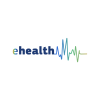One of the findings of the document entitled 'A literature review on health information-seeking behaviour on the web: a health consumer and health professional perspective' shows that eight out of every ten physicians reported that patients presented printed internet-sourced health information at visits, which suggests a new dynamic in the traditional doctor-patient relationship.
Research shows that Internet use by health professionals to obtain health and medical information has increased, although they have difficulty in identifying and filtering the most useful, accurate and credible sources.
In Europe, the most active Internet users in finding health information are those aged 30-44 years. Women are more likely than men to search for health information and online health consumers tend to be more educated, earn more and have high-speed internet access at home and at work.
The report concludes by outlining the implications for health communication research in Europe and the identification of gaps and the focus for further research.
Even though the Internet has become an established source of health information for consumers and health professionals alike, in a European context there is a lack of research on the Internet and health information-seeking behaviour from the perspective of both health consumers and health professionals, and particularly in relation to communicable diseases. This lack of research has implications for the development of health communication initiatives, which is complicated by the nature of the many countries and cultures that make up the EU and European Free Trade Association (EFTA) countries.
The level of access by European citizens and health professionals requires monitoring. The Internet is a resource available to an increasing number of European citizens, but differential access and use is apparent. Health communication research in Europe must take this digital divide into account to facilitate equity of access to health information for all citizens as the Internet as a resource for health is harnessed. The differences in language usage between the EU and EFTA countries must also be acknowledged in terms of the presentation of health information, thus having implications for research with both citizens and health professionals.
The Internet appears to provide the ideal medium for the provision of information targeted at the prevention and control of communicable disease for both health consumers and health professionals. This potential is restricted by the relative absence of studies, particularly on the efficacy of the use of the web for public health communication, specifically for communicable diseases. The closing of this knowledge gap has the potential to contribute to the prevention and control of communicable diseases across Europe.
The literature review, which constitutes part of a series of 'Insights into health communication' on the prevention and control of communicable disease in the European context, focuses on research published from 2006 to 2010 in the English language.
Background information:
The literature review was commissioned by the ECDC, a Stockholm-based EU agency tasked with strengthening Europe's defences against infectious diseases, as one of the outputs of the Framework Partnership Agreement ('Establishing a programme for dissemination of evidence-based health communication activities and innovations on communicable diseases for country support in the EU and EEA/EFTA, 2009-12'), with a consortium of universities comprised of the Health Promotion Research Centre at the National University of Ireland Galway as the lead coordinating centre, and the Institute for Social Marketing, University of Stirling, Scotland and the University of Navarra Clinic, Pamplona, Spain.
Further information:
- Official news article - European Centre for Disease Prevention and Control
- 'A literature review on health information-seeking behaviour on the web: a health consumer and health professional perspective'

